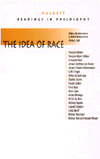Census reveals history of U.S. racial identityPosted in Articles, Census/Demographics, New Media, Politics/Public Policy, Social Science, United States on 2010-04-20 01:38Z by Steven |
Census reveals history of U.S. racial identity
San Francisco Chronicle
2010-04-18
Sally Lehrman, Fellow
Markkula Center for Applied Ethics at Santa Clara University
also Knight Ridder San Jose Mercury News Endowed Chair in Journalism and the Public Interest
Whether or not they can lay claim to a special category, the “Confederate Southern Americans” who want to write themselves into the U.S. census section denoting “race” have a point.
Race, as the social scientists like to say, is “socially constructed.” Since the founding of this country, we have been making it up as we go. Race is a modern idea, historians and anthropologists tell us, a means to categorize and organize ourselves that we constantly adjust.
The U.S. census serves as an archive of this change, a record of classifications that have been “contradictory and confused from the very outset,” says Margo Anderson, a University of Wisconsin, Milwaukee, urban studies historian and expert on U.S. census history. Begun in 1790 as a solution to the problem of how to allocate seats in Congress, the survey didn’t mention “race” originally, but the idea as we understand it today was central. How should slaves be counted? Were they entirely property or were they people? What to do with “civilized” Indians?..
…All along, the “race” category of the census has been a powerful social and political tool wielded both to discriminate and to guard against discrimination. At first, survey categories reflected ideas about the divide between black and white, which immigrants were eligible for citizenship, and how to sort categories of “Indians.” Later, after the Civil Rights Act of 1964, its groupings also made it possible to measure compliance with equal treatment under the law…
Read the entire article here.


